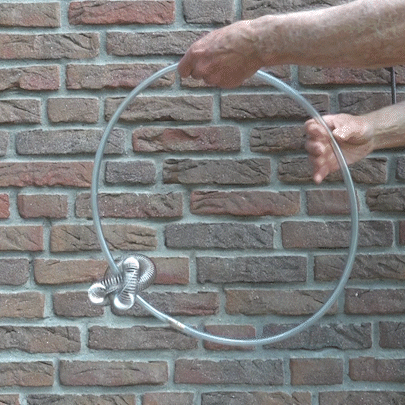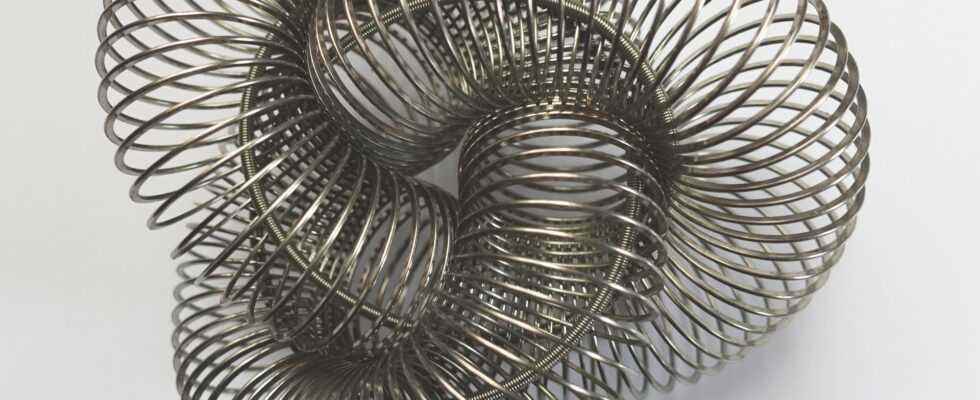In contrast to a nut on a threaded rod, however, we are not dealing here with a sliding but with a real rolling movement. This means, as with the wheels of a vehicle, the point at which the roller sits on the ground covers a distance with each revolution that corresponds to the length of the circumference. A normal wheel is always only in one place on the base. The twisted knot, on the other hand, touches the staff in three different places. In other words, it rolls down three lanes at the same time.
© H. Joachim Schlichting (detail)
Snapshot on Bar | The knot rotates down a wooden stick.
The rolling movement of the knot inevitably means that it cannot be a rigid structure. It retains its external shape and appears to be at rest as a whole during rotation. In reality, however, the band of the knot meanders through its own shape, so to speak. If you mark a point on the unrolling knot, you can follow how it winds cyclically around it.
Amazing physics hides behind many everyday things. felt for many years Hans Joachim Schlichting investigates these phenomena and explains them in his column to the readership of »Scientific Spectrum«. Schlichting is a professor of physics didactics and worked at the University of Münster until his retirement.
The drive of the whole is the weight of the knot. With a straight stick, the screwing down ends at the ground. A sustained movement can be achieved by using a large ring of suitable thickness as a guide instead. The hoop is then rotated in the opposite direction to the rolling node as rapidly as the latter loses height.

© H. Joachim Schlichting
The direction of the axis changes with the height of the node on the curved ring. Correspondingly only a more or less large component of gravity comes into play. The node only benefits from its full effect when the axis of rotation is aligned vertically, i.e. it rotates in a horizontal position. Here he reaches the greatest turning speed.
